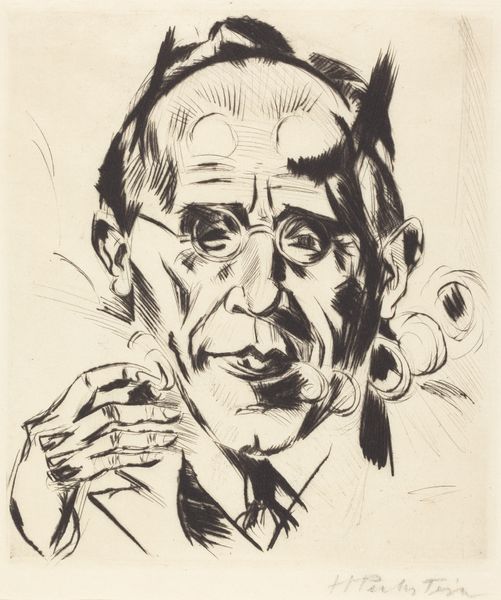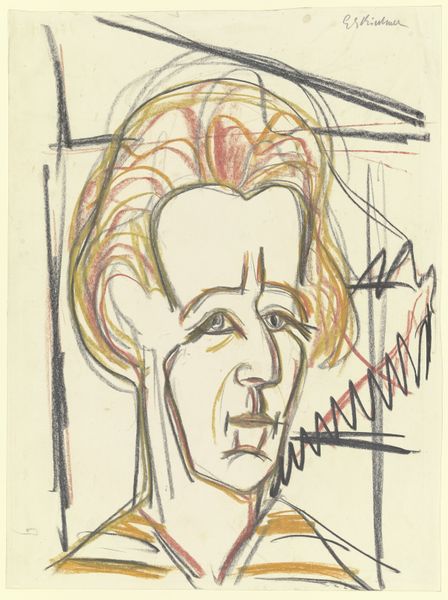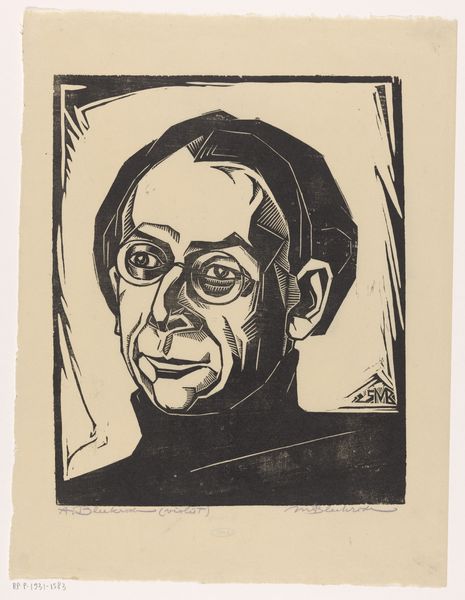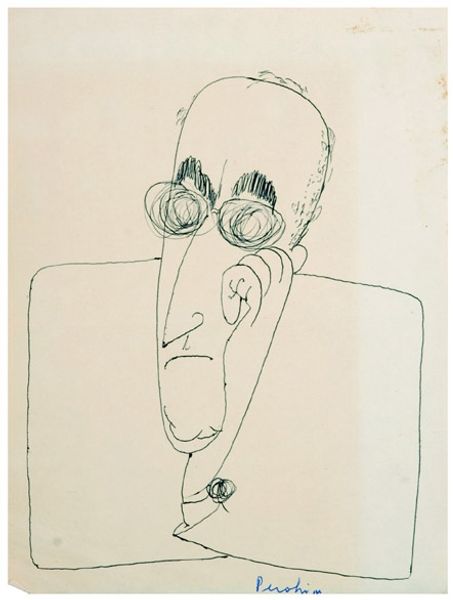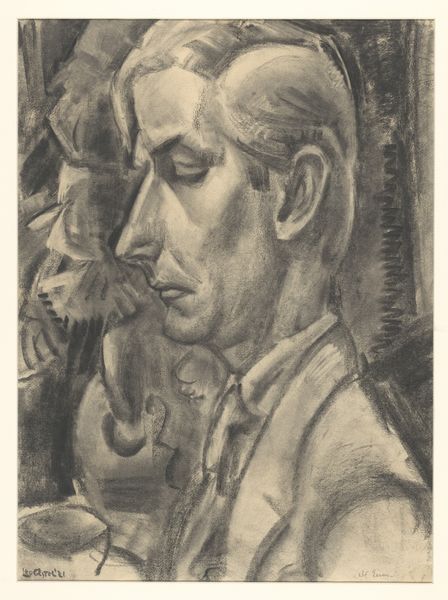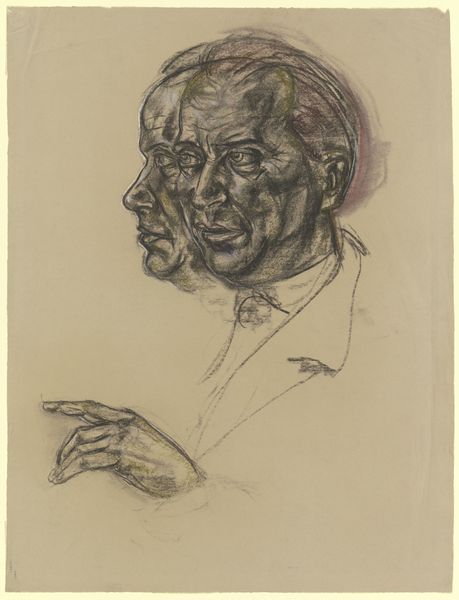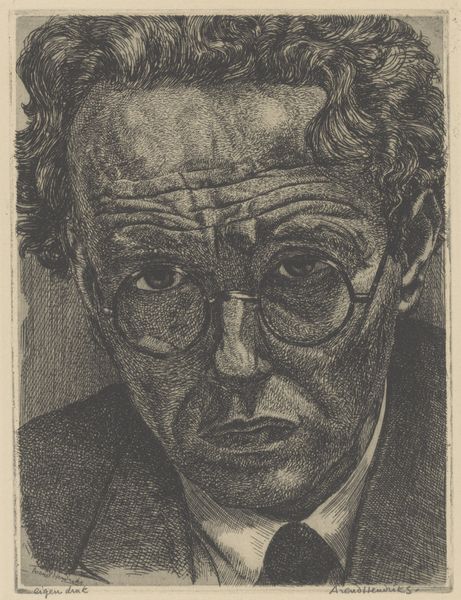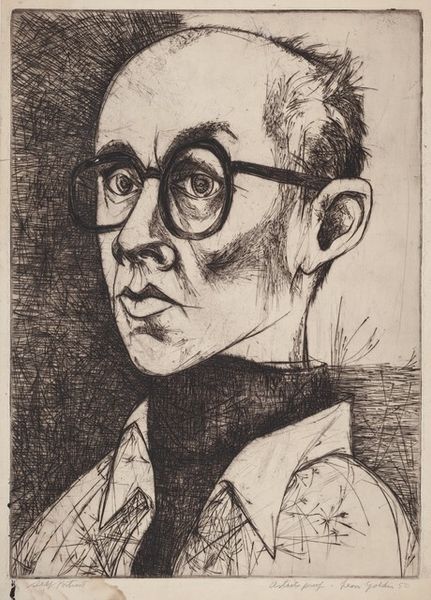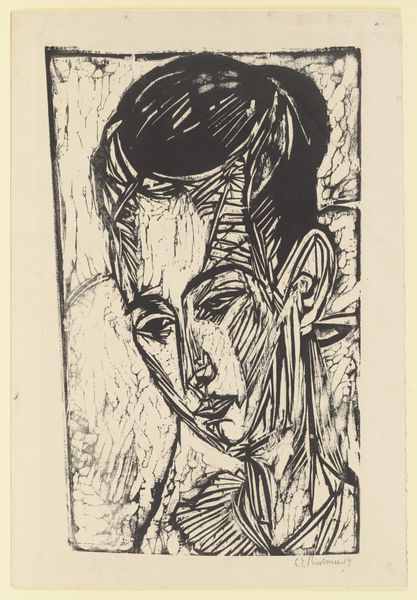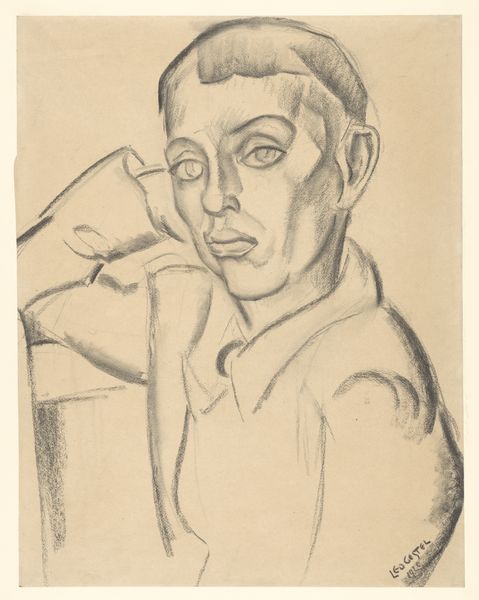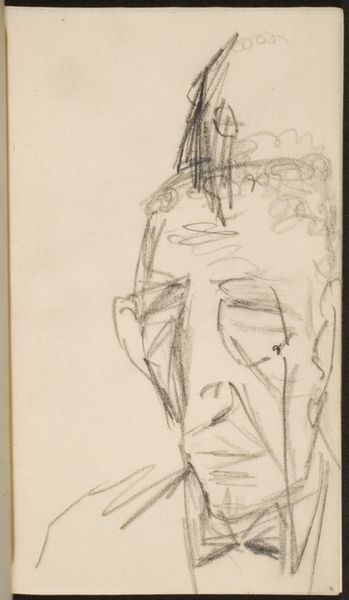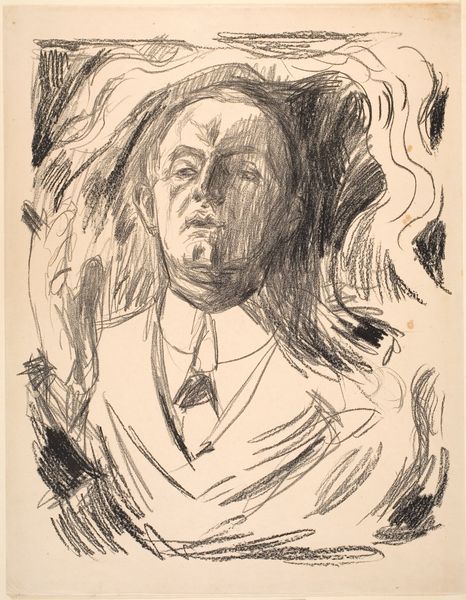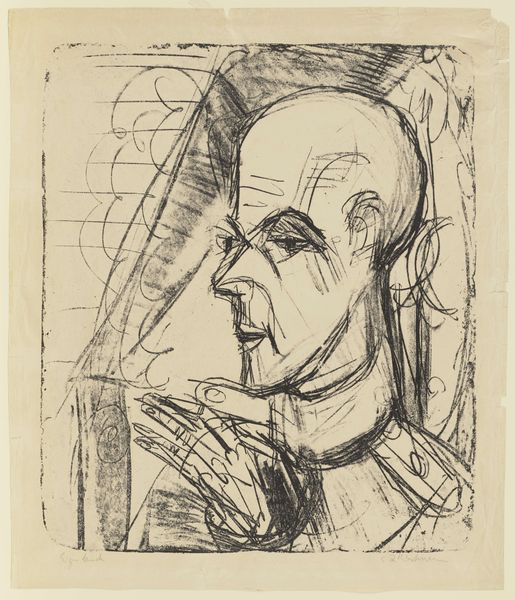
print, etching
#
portrait
# print
#
etching
#
german-expressionism
#
figuration
#
expressionism
#
portrait drawing
Dimensions: plate: 39.7 x 31.9 cm (15 5/8 x 12 9/16 in.) sheet: 59.4 x 41.2 cm (23 3/8 x 16 1/4 in.)
Copyright: National Gallery of Art: CC0 1.0
Curator: Here we have Max Pechstein's etching, "Dr. Paul Fechter," created in 1921. It's a compelling portrait, executed in the German Expressionist style. Editor: My first thought? He looks intensely focused. Like he’s peering into your very soul, or maybe just judging your art choices, haha. I find the textures almost a little abrasive, adding to the severity. Curator: Yes, the sharp lines and tonal contrasts are quite striking. Considering its place within German Expressionism, we can see it as a reflection of the anxieties of the time. Post-World War I Germany was dealing with significant social and economic upheaval. This portrayal, with its starkness, aligns with the broader movement questioning established norms and exploring raw emotional states. Editor: Definitely a turbulent era bleeding through the lines. I almost feel a kinship with this guy though, staring into the abyss of the art world and just… trying to make sense of it all. The nervous energy is palpable. And he definitely looks like the kind of dude who'd know all about art theory. Or politics, or philosophy… Curator: Given that Dr. Paul Fechter was an influential art critic and writer at the time, your observation hits the mark! Pechstein's choice to render him this way—using etching to create such jagged lines and stark contrasts—arguably conveys Fechter's critical perspective, his analytical mind. Perhaps Pechstein admired, or even feared, Fechter's gaze? Editor: Maybe a bit of both? Like a healthy dose of respect mixed with "please don't tear my work apart". And there's a bit of an unsettling gaze there! Curator: We might consider also the role of intellectuals in shaping public discourse during this era, a crucial subject, as art became increasingly politicized. This portrait then is not merely a likeness but a statement about the power of the critic, the artist, and their interconnected struggle to define cultural value. Editor: I can almost hear their lively discussions in some smoky Berlin café now! It’s like this image captures a moment, a tense debate distilled into lines and shading. I kinda wanna jump into this etching. Curator: A journey back to the Weimar Republic through art! Food for thought. Editor: Absolutely! It's a lot to take in. I think I like Dr. Fechter now; I get him. Thanks for untangling that with me!
Comments
No comments
Be the first to comment and join the conversation on the ultimate creative platform.
